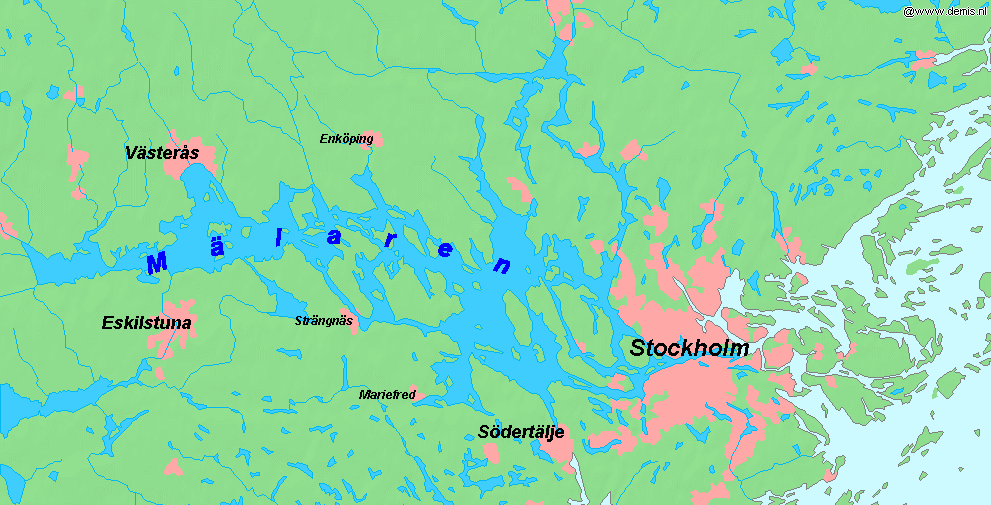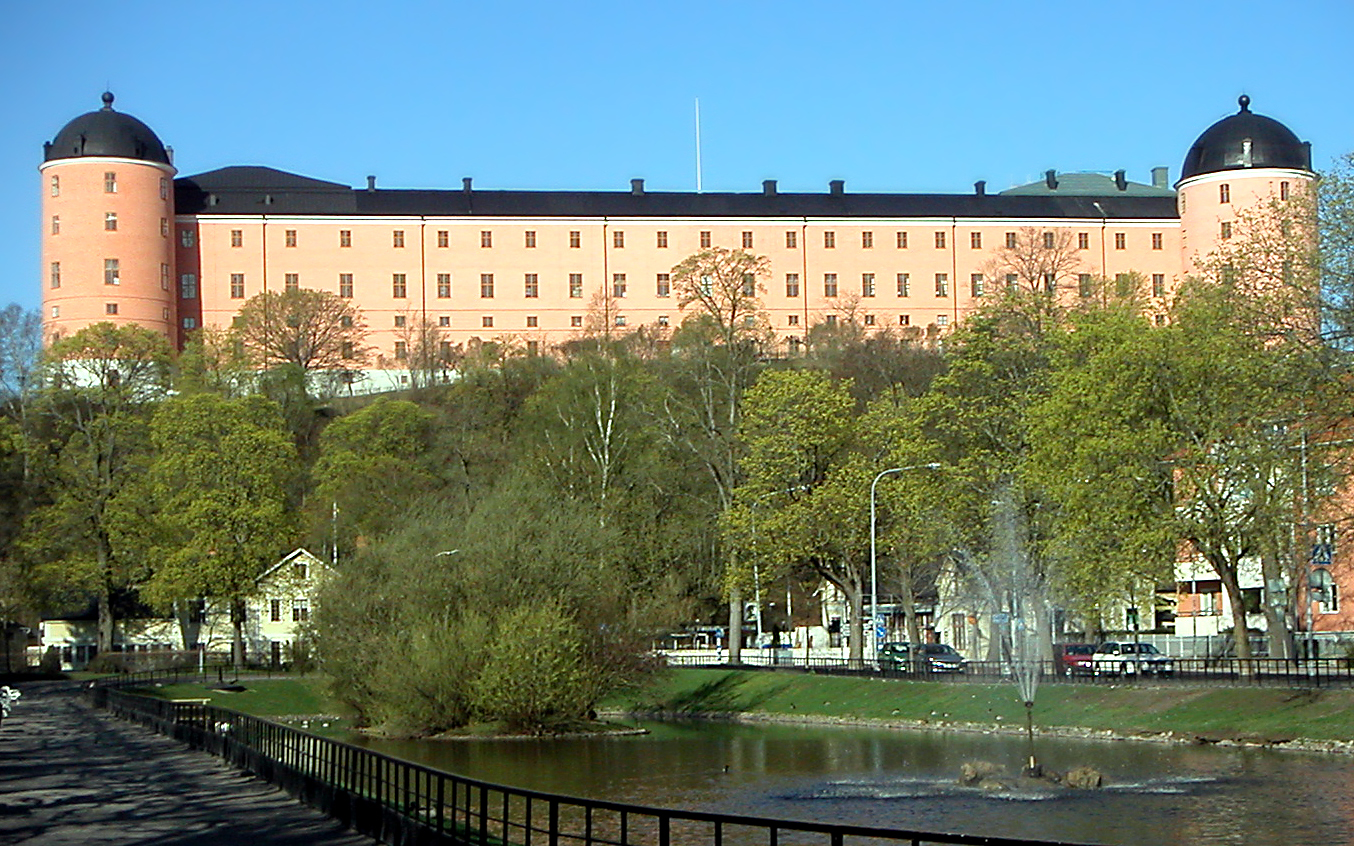|
GĂĄseborg
Gåseborg is a prehistoric hillfort in the Lake Mälaren district in Sweden. The scientists don't know for certain, but most likely it was built to supervise and control the water fairway below the fort, probably sometime during the late iron age (500-1100 AD). Several major fairways passed right here and from this place the local man in power could control the traffic to Uppsala, Sigtuna, Birka Birka (''Birca'' in medieval sources), on the island of Björkö, Ekerö, Björkö (lit. "Birch Island") in present-day Sweden, was an important Viking Age trading center which handled goods from Scandinavia as well as many parts of Continent ... and the western districts of Lake Mälaren. File:Gåsborg 2.jpg, Gåseborg, inner wall to the left and outer wall to the right File:Gaseborg01.jpg, Wall outside Gåseborg File:Gaseborg02.jpg, The central part of Gåseborg References * Per Collinder, Ulf Lovén, ''Vägvisare till naturen i Järfälla'', Järfälla kommun, Miljö- och Hà ... [...More Info...] [...Related Items...] OR: [Wikipedia] [Google] [Baidu] |
Hillfort
A hillfort is a type of fortification, fortified refuge or defended settlement located to exploit a rise in elevation for defensive advantage. They are typical of the late Bronze Age Europe, European Bronze Age and Iron Age Europe, Iron Age. Some were used in the post-Roman Empire, Roman period. The fortification usually follows the contours of a hill and consists of one or more lines of Earthworks (Archaeology), earthworks or stone Rampart (fortification), ramparts, with stockades or defensive walls, and external ditches. If enemies were approaching, the inhabitants would spot them from a distance. Prehistoric Europe saw a growing population. It has been estimated that in about 5000 BC during the Neolithic between 2 million and 5 million lived in Europe; in the Late Iron Age it had an estimated population of around 15 to 30 million. Outside Greece and Italy, which were more densely populated, the vast majority of settlements in the Iron Age were small, with ... [...More Info...] [...Related Items...] OR: [Wikipedia] [Google] [Baidu] |
Mälaren
Mälaren ( , , or ), historically referred to as Lake Malar in English, is the third-largest freshwater lake in Sweden (after Vänern and Vättern). Its area is and its greatest depth is 64 m (210 ft). Mälaren spans from east to west. The lake drains, from south-west to north-east, into the Baltic Sea through its natural outlets Norrström and Söderström (as it flows around Stadsholmen island) and through the artificial Södertälje Canal and Hammarbyleden waterway. The easternmost bay of Mälaren, in central Stockholm, is called Riddarfjärden. The lake is located in Svealand and bounded by the provinces of Uppland, Södermanland and Västmanland. The two largest islands in Mälaren are Selaön () and Svartsjölandet (). Mälaren is low-lying and mostly relatively shallow. Being a quite narrow and shallow lake, Mälaren has bridge crossings between Eskilstuna and Västerås with two crossings on the western end at Kvicksund and three separate bridges between St ... [...More Info...] [...Related Items...] OR: [Wikipedia] [Google] [Baidu] |
Sweden
Sweden, formally the Kingdom of Sweden, is a Nordic countries, Nordic country located on the Scandinavian Peninsula in Northern Europe. It borders Norway to the west and north, and Finland to the east. At , Sweden is the largest Nordic country by both area and population, and is the List of European countries by area, fifth-largest country in Europe. Its capital and largest city is Stockholm. Sweden has a population of 10.6 million, and a low population density of ; 88% of Swedes reside in urban areas. They are mostly in the central and southern half of the country. Sweden's urban areas together cover 1.5% of its land area. Sweden has a diverse Climate of Sweden, climate owing to the length of the country, which ranges from 55th parallel north, 55°N to 69th parallel north, 69°N. Sweden has been inhabited since Prehistoric Sweden, prehistoric times around 12,000 BC. The inhabitants emerged as the Geats () and Swedes (tribe), Swedes (), who formed part of the sea-faring peopl ... [...More Info...] [...Related Items...] OR: [Wikipedia] [Google] [Baidu] |
Uppsala
Uppsala ( ; ; archaically spelled ''Upsala'') is the capital of Uppsala County and the List of urban areas in Sweden by population, fourth-largest city in Sweden, after Stockholm, Gothenburg, and Malmö. It had 177,074 inhabitants in 2019. Located north of the capital Stockholm, it is also the seat of Uppsala Municipality. Since 1164, Uppsala has been the ecclesiology, ecclesiastical centre of Sweden, being the seat of the Archbishop of Uppsala, Archbishop of the Church of Sweden. Uppsala is home to Scandinavia's largest cathedral – Uppsala Cathedral, which was the frequent site of the coronation of the Swedish monarch until the late 19th century. Uppsala Castle, built by King Gustav I of Sweden, Gustav Vasa, served as one of the royal residences of the Swedish monarchs, and was expanded several times over its history, making Uppsala the secondary capital of Sweden during its Swedish Empire, greatest extent. Today, it serves as the residence of the Governor of Uppsala County ... [...More Info...] [...Related Items...] OR: [Wikipedia] [Google] [Baidu] |
Sigtuna
Sigtuna is a Urban areas in Sweden, locality situated in the eponymous Sigtuna Municipality, in Stockholm County, Sweden with 9,689 inhabitants in 2020. It is the namesake even though the seat of the municipality is in another locality, Märsta. Sigtuna is for historical reasons still often referred to as a . Sigtuna is situated at the bay Skarven, stretching around Upplands-Bro and a part of Mälaren, Lake Mälaren. Present-day Sigtuna, a harbour town that was established around 980, developed about east of Old Sigtuna, which, according to Old Norse religion, was previously the home of the widely revered god Odin. Etymology The name of Sigtuna was moved from what is presently called Fornsigtuna, Signhildsberg. The meaning of ''Sigtuna'' is contested. According to one theory, it is a compound (linguistics), compound name where the second element is -''wikt:tún#Old_Norse, tuna'' and the first one is either of two closely related dialectal words, viz. ''sig'' meaning "seeping wate ... [...More Info...] [...Related Items...] OR: [Wikipedia] [Google] [Baidu] |
Birka
Birka (''Birca'' in medieval sources), on the island of Björkö, Ekerö, Björkö (lit. "Birch Island") in present-day Sweden, was an important Viking Age trading center which handled goods from Scandinavia as well as many parts of Continental Europe and the Orient. Björkö is located in Mälaren, Lake Mälaren, 30 kilometers west of contemporary Stockholm, in the municipality of Ekerö. Birka was founded around AD 750 and it flourished for more than 200 years. It was abandoned c. AD 975, around the same time Sigtuna was founded as a Christianity, Christian town some 35 km to the northeast. It has been estimated that the population in Viking Age Birka was between 500 and 1000 people. The archaeological sites of Birka and Hovgården, on the neighbouring island of Adelsö, make up an archaeological complex which illustrates the elaborate trading networks of Viking Scandinavia and their Viking expansion, influence on the subsequent history of Europe. Generally regarded ... [...More Info...] [...Related Items...] OR: [Wikipedia] [Google] [Baidu] |
Hill Forts In Sweden
A hill is a landform that extends above the surrounding terrain. It often has a distinct summit, and is usually applied to peaks which are above elevation compared to the relative landmass, though not as prominent as mountains. Hills fall under the category of slope landforms. Terminology The distinction between a hill and a mountain is unclear and largely subjective, but a hill is universally considered to be not as tall, or as steep as a mountain. Geographers historically regarded mountains as hills greater than above sea level. In contrast, hillwalkers have tended to regard mountains as peaks above sea level. The ''Oxford English Dictionary'' also suggests a limit of and Whittow states "Some authorities regard eminences above as mountains, those below being referred to as hills." Today, a mountain is usually defined in the UK and Ireland as any summit at least high, while the UK government's Countryside and Rights of Way Act 2000 defined mountainous areas (for the ... [...More Info...] [...Related Items...] OR: [Wikipedia] [Google] [Baidu] |
Prehistoric Sites In Europe
Prehistory, also called pre-literary history, is the period of human history between the first known use of stone tools by hominins million years ago and the beginning of recorded history with the invention of writing systems. The use of symbols, marks, and images appears very early among humans, but the earliest known writing systems appeared years ago. It took thousands of years for writing systems to be widely adopted, with writing having spread to almost all cultures by the 19th century. The end of prehistory therefore came at different times in different places, and the term is less often used in discussing societies where prehistory ended relatively recently. It is based on an old conception of history that without written records there could be no history. The most common conception today is that history is based on evidence, however the concept of prehistory hasn't been completely discarded. In the early Bronze Age, Sumer in Mesopotamia, the Indus Valley Civilis ... [...More Info...] [...Related Items...] OR: [Wikipedia] [Google] [Baidu] |



